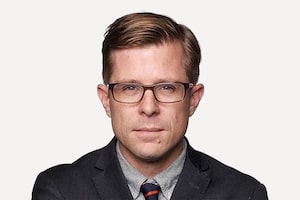Ann Lawlor, Mayor of Halton Hills, poses for a photo along a wooded area near the south end of the town in the community of Georgetown, on Oct. 25.Nick Iwanyshyn/The Globe and Mail
When Ann Lawlor was elected Halton Hills mayor last October, she knew many developers would oppose her vision for the Ontario community, one that preserves its small-town character and curbs sprawl. But she never expected to spend a year confronting an even more powerful force – Premier Doug Ford’s government.
Halton Hills is one of three dozen municipalities in Ontario’s densely populated Greater Golden Horseshoe that were forced to expand their urban boundaries and designate more land for housing, after the Progressive Conservative government imposed its will on their growth plans – tearing up years of work by local officials.
Last week, Housing Minister Paul Calandra pledged to reverse those interventions. The U-turn follows accusations by opposition members that the government used the same flawed process for both the municipal boundary expansions and the now-cancelled Greenbelt carve-outs.
Then-auditor-general Bonnie Lysyk found in August that opening up parts of the protected Greenbelt to housing – the subject of an RCMP investigation – favoured a handful of developers and handed them a potential $8-billion windfall.
Although municipal leaders welcomed Mr. Calandra’s decision to scrap the province’s boundary changes, the entire episode has raised questions about the ease with which developers and their lobbyists circumvented municipal councils and exerted their influence directly on Queen’s Park.
Rolling back the interventions was “an act of courage” by Mr. Calandra and “a recognition that a mistaken process had been made,” Ms. Lawlor told The Globe and Mail. “There has been a huge set of machinations that municipalities have gone through.”
Political staff in the office of Steve Clark, Mr. Calandra’s predecessor, allowed developers to go over the heads of municipal leaders to dramatically expand the amount of land that towns and cities had designated for future growth in their official plans, the policy documents that guide what gets built and where.
These circumventions were detailed in the Integrity Commissioner’s report, which, together with Ms. Lysyk’s investigation, detailed the Greenbelt scandal. Although the Integrity Commissioner largely focused on land that was to be taken out of the Greenbelt, he also touched on the province’s moves to override municipalities’ official plans.
According to a Globe tally, the province added a total of 11,100 hectares to their urban boundaries – an area roughly the size of Richmond Hill, Ont.
In her interviews with The Globe, Ms. Lawlor described the roller-roaster ride of the past 12 months. Her town is part of Halton Region, west of Toronto, which voted in the summer of 2022 to freeze its urban boundary.
The Ontario government went against its wishes and added 4,400 hectares to the boundary – 10 per cent of what region planners describe as its prime agricultural land.
Most of the expansion of the region’s urban boundary was set for Halton Hills and the neighbouring town of Milton.
Ms. Lawlor learned about the changes 11 days after she was elected mayor, when the government posted them on the province’s environmental registry on Nov. 4 – the same day it announced the Greenbelt carve-outs.
“I was stunned and disappointed because it was absolutely the opposite to what I had campaigned on for mayor,” said Ms. Lawlor, a councillor since 2010. “My vision for our community is a small town where people know one another.”
Documents on the registry show that lobbyists and consultants hired by landowners asked for 16 separate parcels of land to be added to Halton Region’s urban boundary. The government unilaterally approved all but two of those requests, the documents show. It also approved requests to convert four parcels of land in the urban boundary to mixed uses, paving the way for housing development.
The changes came “completely out of the blue,” Jane Fogal, a Halton Hills councillor, told The Globe. “We wanted to know who asked for this and who is winning on this and why don’t we know about it.”
Ms. Fogal said this was the first time during her 26 years on council that provincial officials got into the nitty-gritty details of the region’s official plan, including redrawing its urban boundary. In the past, she said, housing ministry bureaucrats focused on whether the region’s plan was consistent with provincial policies and left any boundary changes up to the region.
A source involved in the process used to add boundary expansions to municipal plans agreed that most of the established procedures were not followed. Housing ministry planners were not allowed to share draft versions of the changes with their municipal counterparts, as would usually be customary, the source said, although some informal verbal briefings did occur.
The Globe is not identifying the source as they were not authorized to speak publicly about internal government matters.
Ministry planners were also required by their managers to take the unusual step of signing non-disclosure agreements, the source said, something teams working on the Greenbelt extractions also signed.
While all this was going on, Ryan Amato, Mr. Clark’s chief of staff at the time who oversaw the changes to municipalities’ official plans, often met with lobbyists and consultants, according to the Integrity Commissioner’s report.
Mr. Amato also presided over a “biased” process that “favoured certain developers” on the Greenbelt changes, the auditor-general found. Mr. Amato and Mr. Clark have since resigned and did not respond to e-mail requests for comment.
Mr. Amato got involved in some of the changes to Halton Region’s official plan, the Integrity Commissioner found. Mr. Amato met last October with lobbyist Nico Fidani-Diker, a former aide to the Premier, to discuss “three or four properties in the Halton area” on behalf of his client Penta Properties, now known as Alinea Group Holdings, the Integrity Commissioner’s report says.
Penta also enlisted the services of Peter Van Loan, a lawyer and former federal cabinet minister in Stephen Harper’s government, to allow housing on three of its properties in Burlington. Mr. Clark’s office gave the green light, designating two of the properties in the city’s existing urban boundary as mixed use. It also confirmed the legal status of the third site as a “settlement area,” to accommodate development, the environmental registry shows.
The government approved all five of Mr. Van Loan’s requests, the registry shows, including a 243-hectare addition to Halton Hills’ urban boundary on behalf of a group of landowners.
Before the province made that decision, Mr. Van Loan had been urging – without success – the region to expand its development boundaries. Monika Caemmerer, a local resident, told The Globe in an interview that she was on a Zoom call with Mr. Van Loan and others back in May of 2021, when the region sought input from the public on its official plan.
According to her notes of the Zoom call, Mr. Van Loan’s argument was that newcomers to Canada cannot be denied the Canadian dream of owning a home with a backyard.
Mr. Van Loan declined to comment on the call, saying in an e-mail that reports he obtained from planning consultants demonstrated that his clients’ proposed changes conformed with provincial planning policies.
Not every politician in the Region of Halton supported a boundary freeze. One was the mayor of Milton, Gord Krantz. Mr. Krantz told The Globe that when the region voted for the freeze, he went right to Mr. Clark and asked the province to get involved. “And they did.”
For her part, Ms. Lawlor wondered whether anything is stopping the Ford government from imposing other unwanted changes on her town.
“Trust matters,” she said. “I think there are many municipal leaders who are pretty shaky when it comes to trusting what might happen in the future.”
 Karen Howlett
Karen Howlett Jeff Gray
Jeff Gray